Community Time Capsule: German American
Traditions
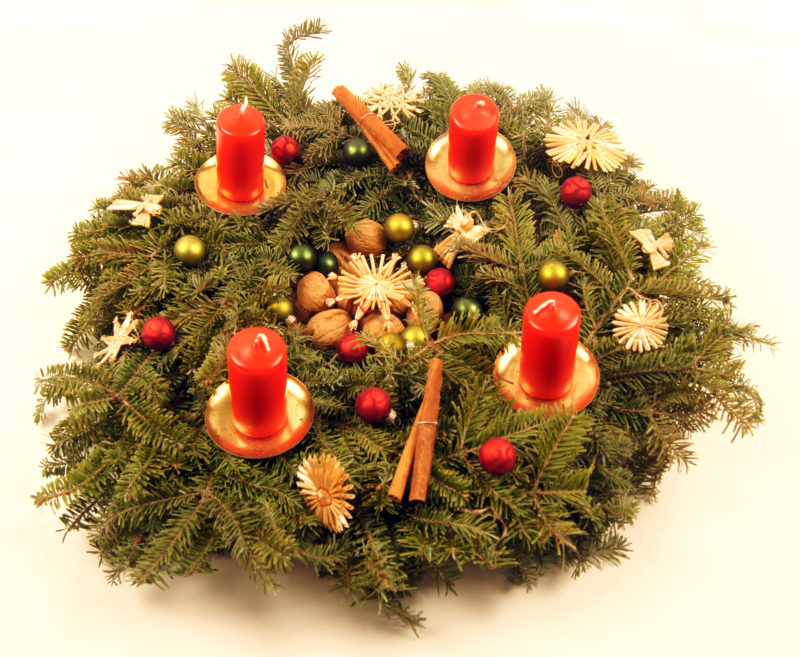
Advent Wreath. Collection of Barbara Cano
Advent Wreath
This is a German Advent wreath. It features four candles, which are lit one per week on the four Sundays before Christmas. In German and German-American homes, the wreath is usually placed in the center of the dining table. In Germany, a large Advent wreath hangs from the ceiling in church.
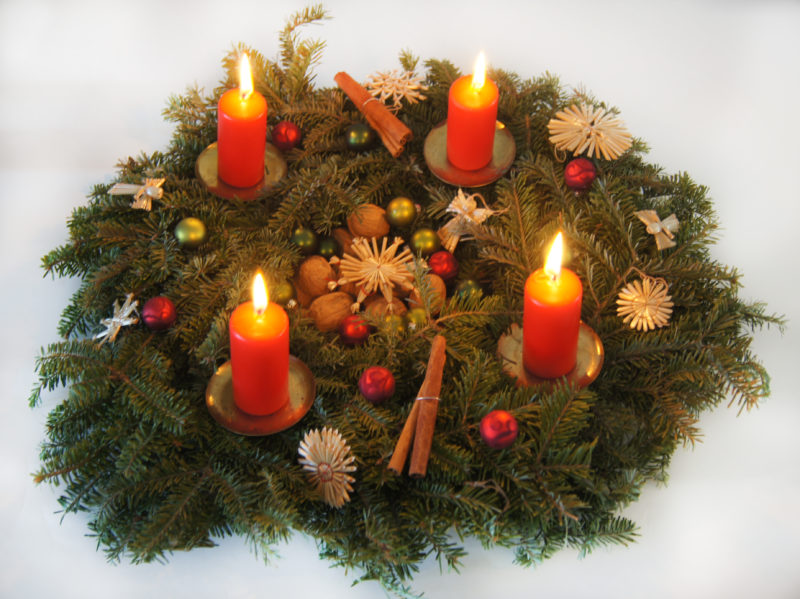
Illuminated Advent Wreath. Collection of Barbara Cano
Advent Wreath
The pillar candles seen here are traditional, but some people prefer to use tapers or other styles. The Do-It-Yourself movement is very popular in Germany today; Our German American collaborator, Barbara Cano says that many people get very creative with their wreaths, using all kinds of materials and themes to decorate them.
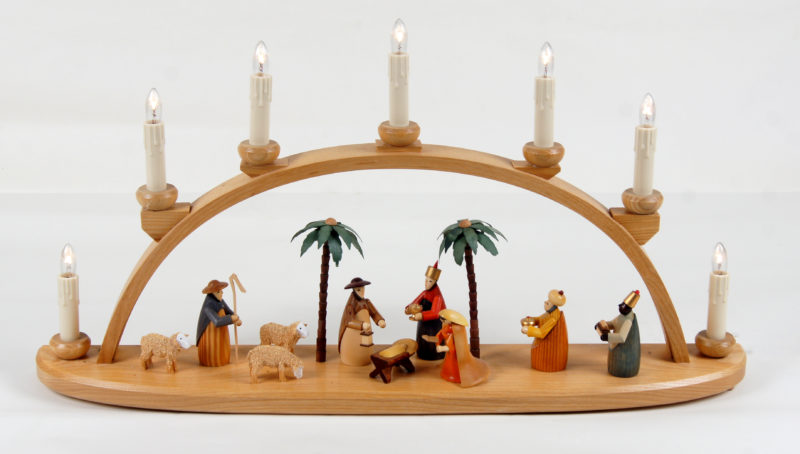
Schwibbogen. Collection of Barbara Cano
Schwibbogen
This candle arch, or Schwibbogen, is from a region in eastern Germany called Erzgebirge, which translates to the Ore Mountains. Erzgebirge is a former mining area in that forms a natural border between Saxony (Germany) and Bohemia (Czech Republic). This style of ornament was one of the few things that were successfully exported from East Germany during its time behind the Iron Curtain (1949-1990). According to tradition, miners used to hang their lamps in an arch shape outside the pit entry when they started their last shift before Christmas; over time, this tradition was adapted for the home.
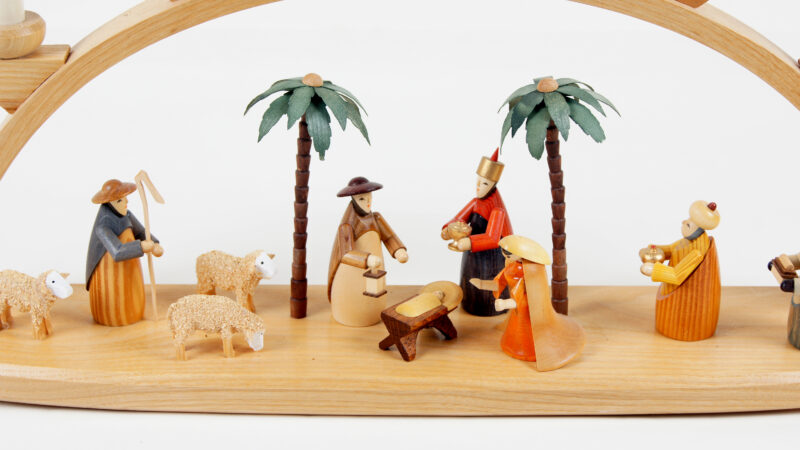
Schwibbogen Close-Up of Figurines. Collection of Barbara Cano
Schwibbogen (close-up)
Small wooden figures like those in this decoration can be collected individually and arranged into scenes. Another typical decoration from Erzgebirge is the Christmas pyramid, which has scenes on one or several tiers that turn due to the heat emitted by lit candles at the base. Barbara Cano says that Germans traditionally do not hang lights outside at Christmas time. Instead, many people place decorations like this one (now with electric lights, but originally with candles) in their windows.
Family Heirlooms
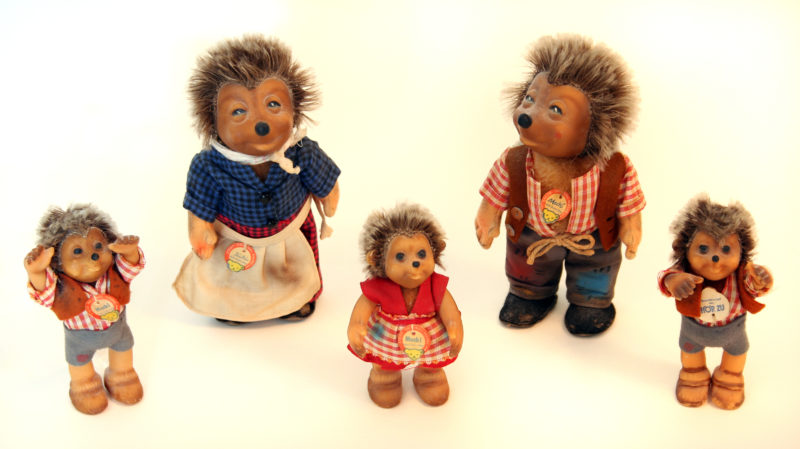
Steiff Hedgehogs. Collection of Martina Wells
Steiff Hedgehogs (family)
“These Steiff hedgehogs represent our family: mom, dad, three children. They were bought in Germany during the 1960s by my father-in-law, Leon Wells, and two of them by my parents, Otto and Elisabeth Albinger. Bringing all of them together makes our family of today. They are valuable because they are original Steiff animals, and also because of the circumstances of how they came together. They now live on the shelf in my son’s room along with a huge collection of other Steiff animals.” –Martina Wells
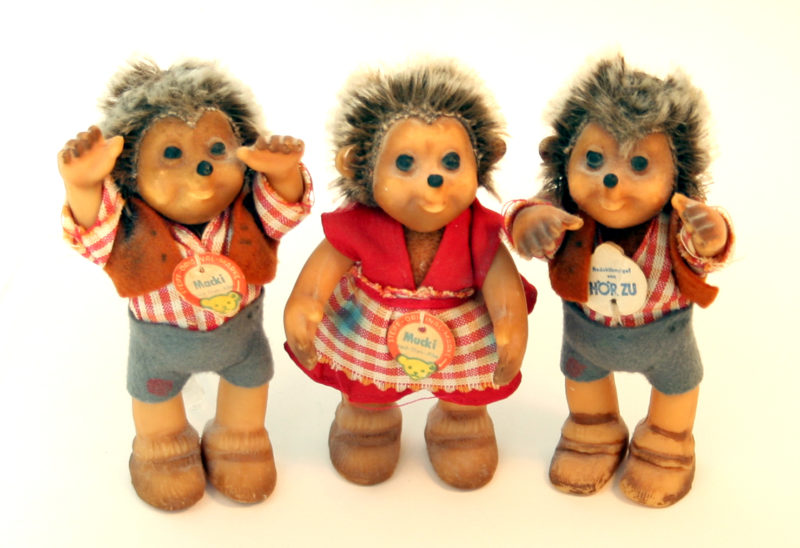
Steiff Family of Hedgehogs: Children. Collection of Martina Wells
Steiff Hedgehogs (children)
These dolls represent the characters of Mecki and Micki, husband and wife hedgehogs, originally created by Ferdinand Diehl for the popular puppet films he made with his brother from 1929 to 1970. The hedgehog children are named Macki and Mucki. Later on, Mecki and Micki became the mascots of the German magazine HÖR ZU, which publishes television and film news and still exists today.
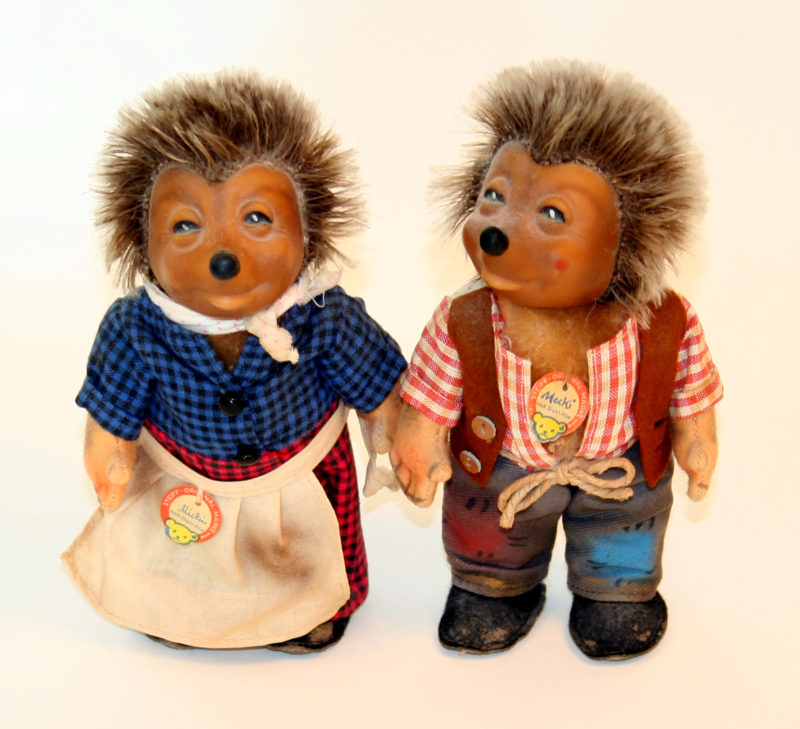
Steiff Family of Hedgehogs: Parents. Collection of Martina Wells
Steiff Hedgehogs (parents)
The Steiff company gained the exclusive rights to produce doll versions of the characters in 1951 and they remain popular to this day.
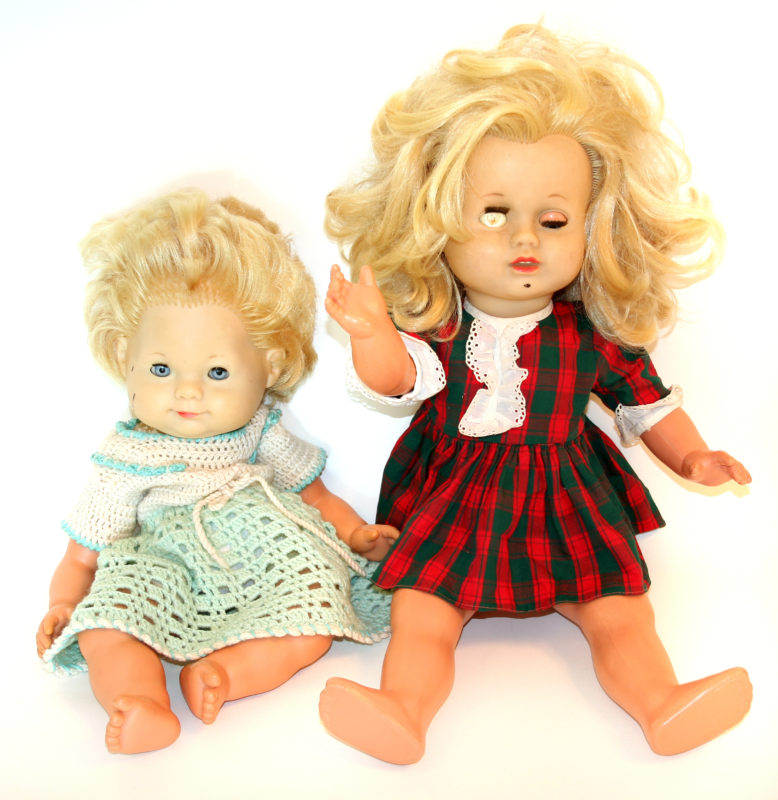
Baby Dolls. Collection of Martina Wells
Baby Dolls
“The two dolls are from my childhood and were given to me by my grandmother Maria at Christmas. One of them is wearing a dress my grandmother made herself. Their names are Susie and Kirsten. When I moved to the US, I had to bring them with me as they are a connection with my childhood, and remind me of a very happy time in my life.” —Martina Wells
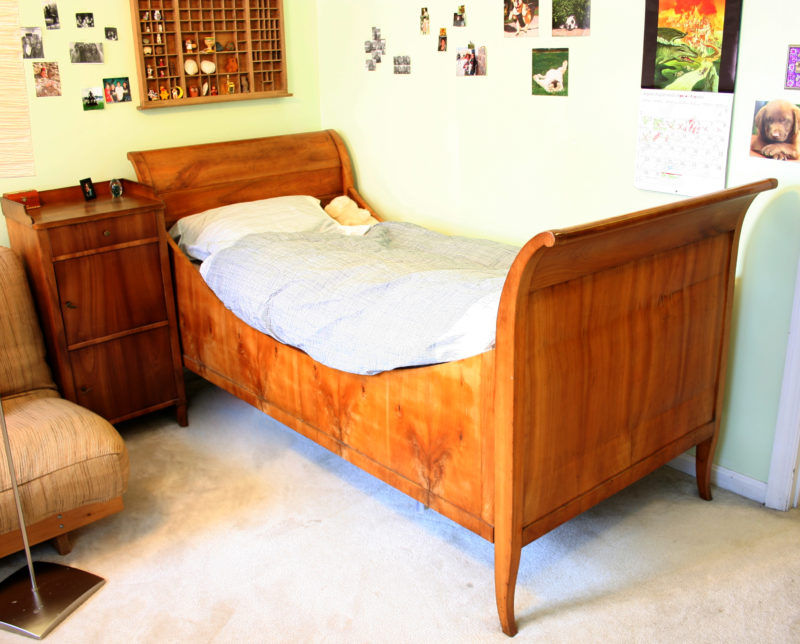
Biedermeier Bed. Collection of Barbara Cano
Biedermeier Bed
“This is a Biedermeier bed and nightstand in my daughter’s room. I was very happy that my 11-year-old daughter decided that this bed that she slept in at my mother’s house was her favorite and she would like to have it in her room in Pittsburgh. It is a bed family members have slept in for generations.” —Barbara Cano
The Biedermeier style of furniture was popular among the rising middle class in Germany in the early nineteenth century. Well-made, decorative furniture was prized by this group, who suddenly had discretionary income to spend on quality goods.
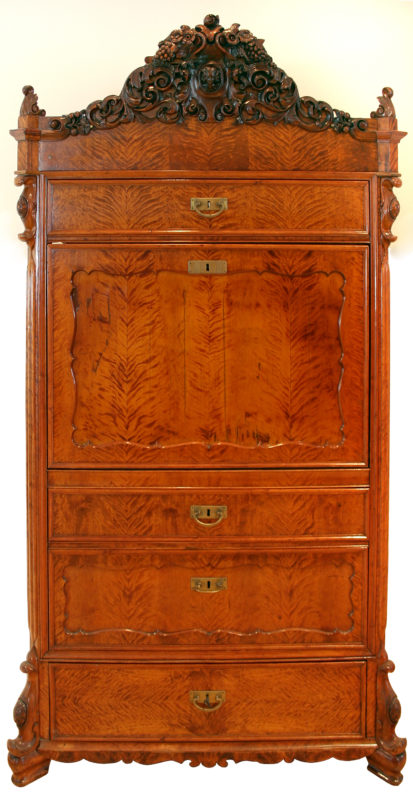
Barbara Cano’s family had to flee Berlin in the last days of World War II. It was only through friends and luck that they got their furniture back. “This is a secretary from the epoch of Wiener Barock [Viennese Baroque style] around 1850. It always fascinated me because it has several secret drawers, the middle part is only to be opened with a trick combination,” she says.
Heirloom Desk: closed view
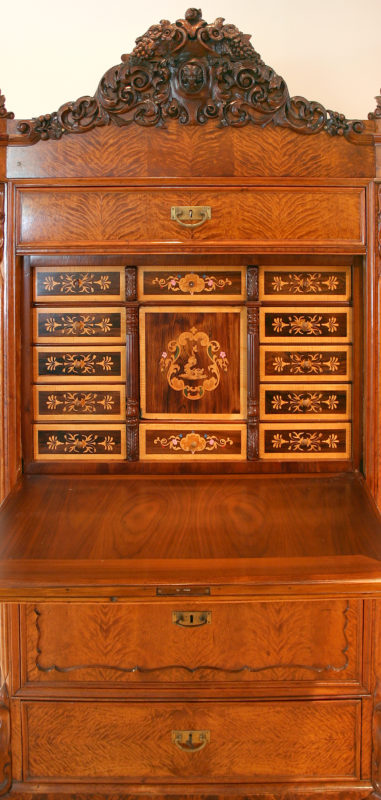
Heirloom Desk: open view
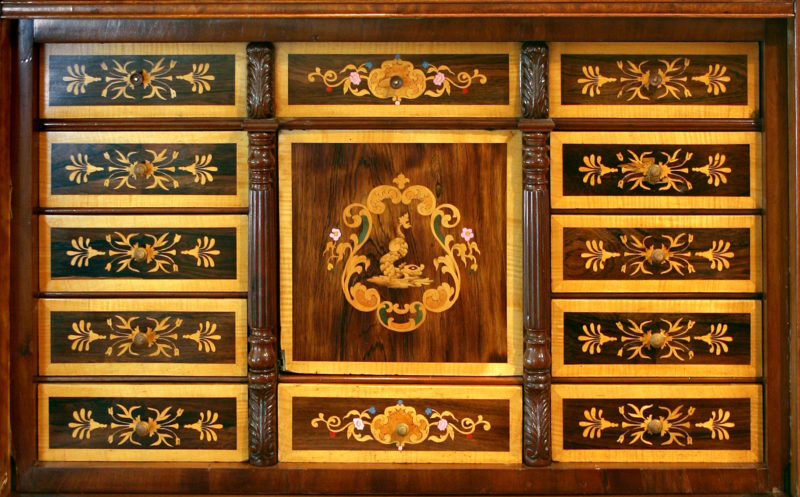
Heirloom Desk
Collection of Barbara Cano
Heirloom Desk: close-up
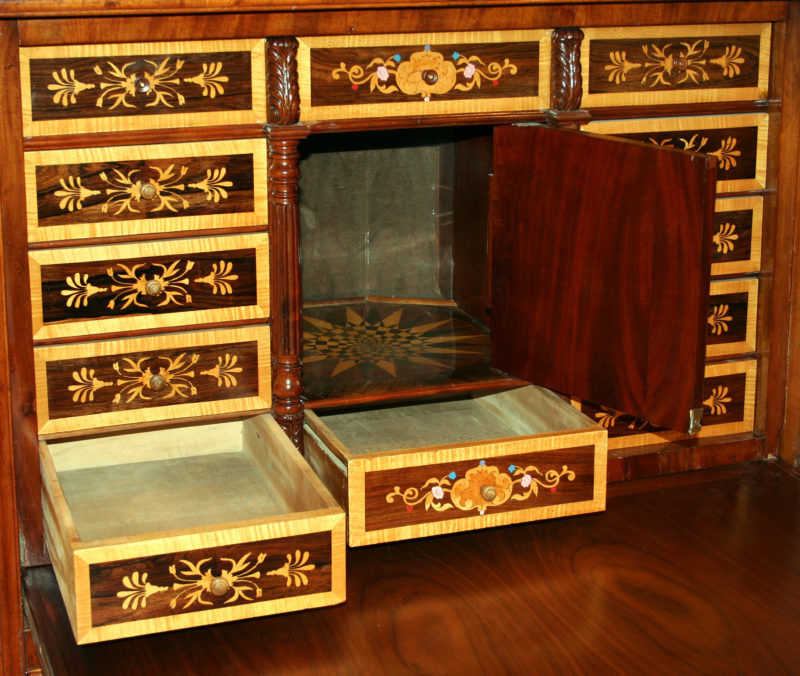
Heirloom Desk
Collection of Barbara Cano
Food
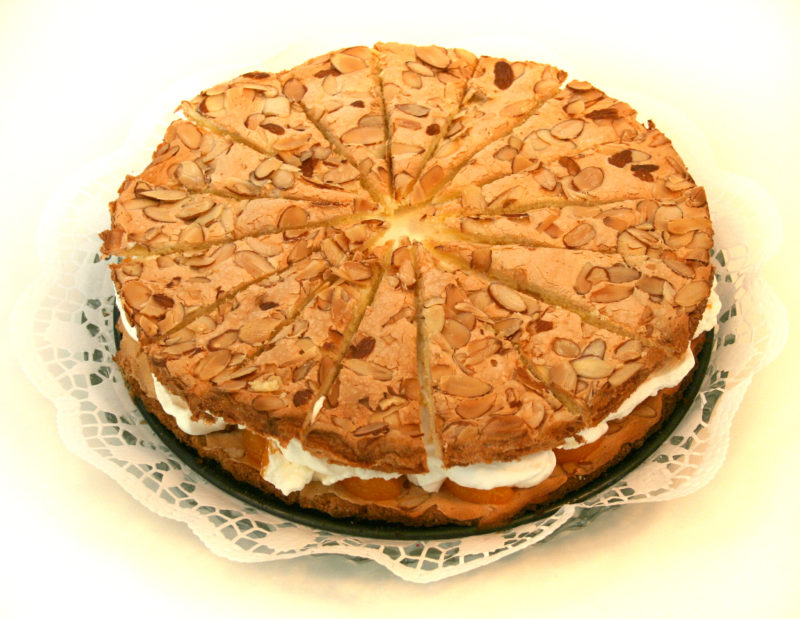
Oma’s Mandelkuchen. Collection of Martina Wells
Oma’s Mandelkuchen
“This is the Mandelkuchen cake my grandmother Katharina used to make on special occasions. Since she has passed away and I live in the U.S., I keep the tradition alive by baking this cake on special occasions in my family.” —Martina Wells
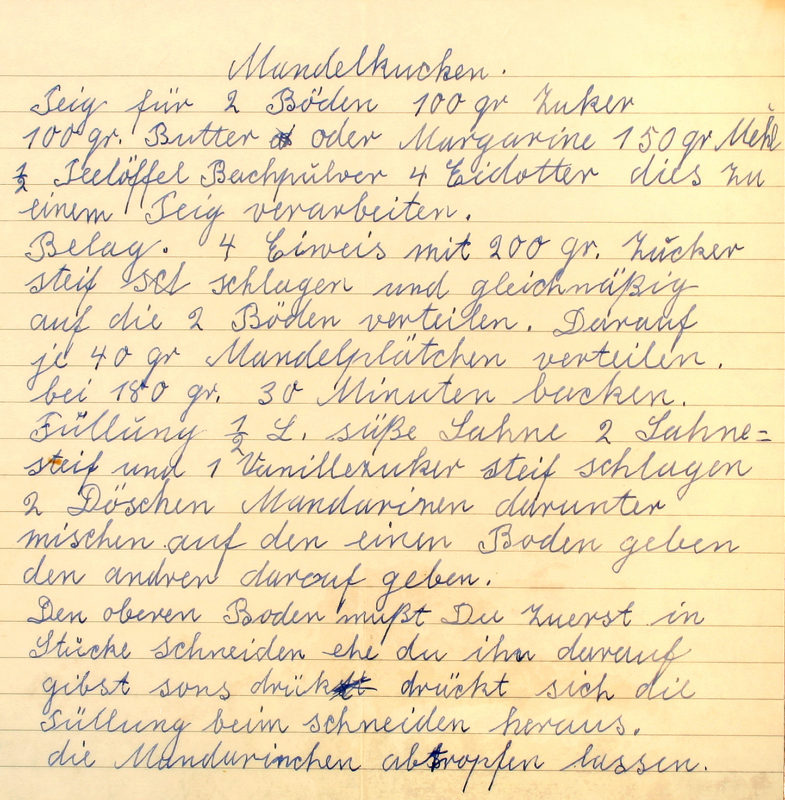
Mandeltorte Recipe. Collection of Martina Wells
Mandelkuchen (Mandeltorte) Recipe
“This Mandelkuchen recipe was written down for me by my grandmother.” —Martina Wells
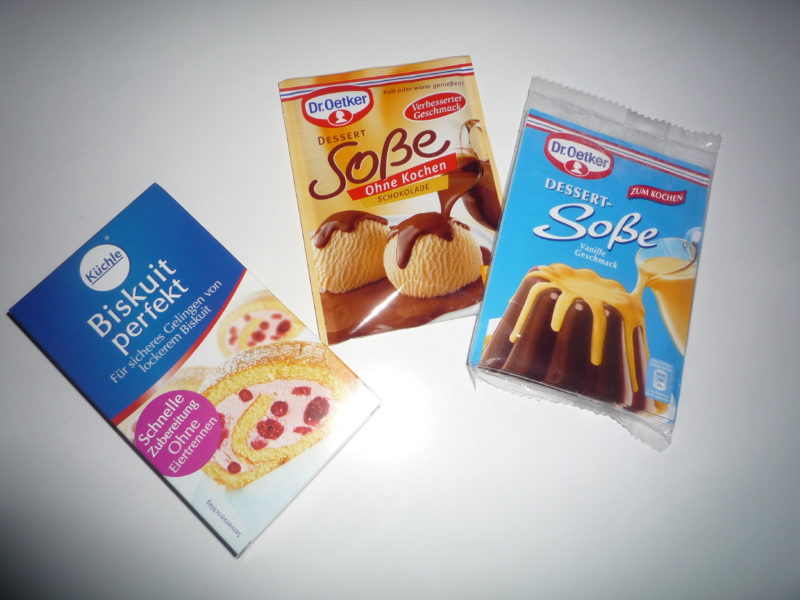
Packaged Dessert Mixes. Collection of Martina Wells
Packaged Dessert Mixes
Martina Wells appreciates these mixes for their authentic taste and ease of preparation. The two brands seen here are well-known and easy to find in Germany. The Dr. Oetker product line began in 1891 when Dr. August Oetker developed a baking powder called Backin. It came pre-measured as a dose for 500g of flour and included directions for making a simple cake by adding a few other ingredients. The idea behind the company has always been quality and reliability, which it advertises with a tagline of “succeeds every time.” Today, the company has a full line of baking, dessert, and pudding mixes, as well as yogurt, chilled desserts, and frozen foods, in addition to its baking powders. Seen here are mixes for vanilla and chocolate dessert sauces. The Küchle brand has been around for even longer; it celebrated 150 years in 2014. Similar to Dr. Oetker products, Küchle products are meant to help home cooks achieve uniform results easily and with little prep time. At the top of the package, the translation reads “Perfect biscuit: for sure success with loose biscuits.” The pink circle on the package advertises “rapid preparation—no need to separate eggs.”
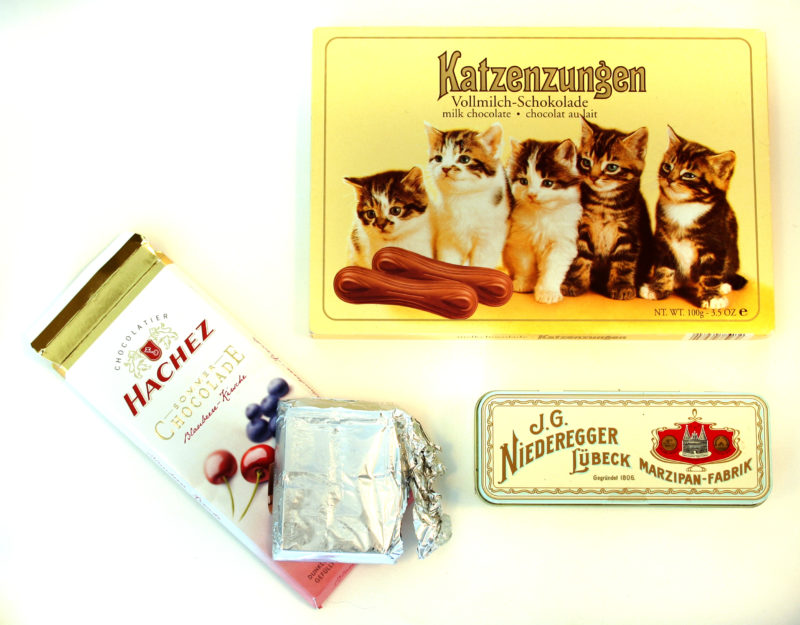
German Candy. Collection of Martina Wells
German Candy
“One of the things I miss from home is good chocolate. Every time I go back I buy a whole variety of chocolate items and bring them here. When family or friends come to visit they are all obliged to bring chocolates. I save them in a special container in my pantry. Sometimes I hide the chocolate from other family members. It is always a special treat and religious moment when I open a bar or box of chocolate. We celebrate, eating it slowly and stretching out the experience.” —Martina Wells
Collectibles
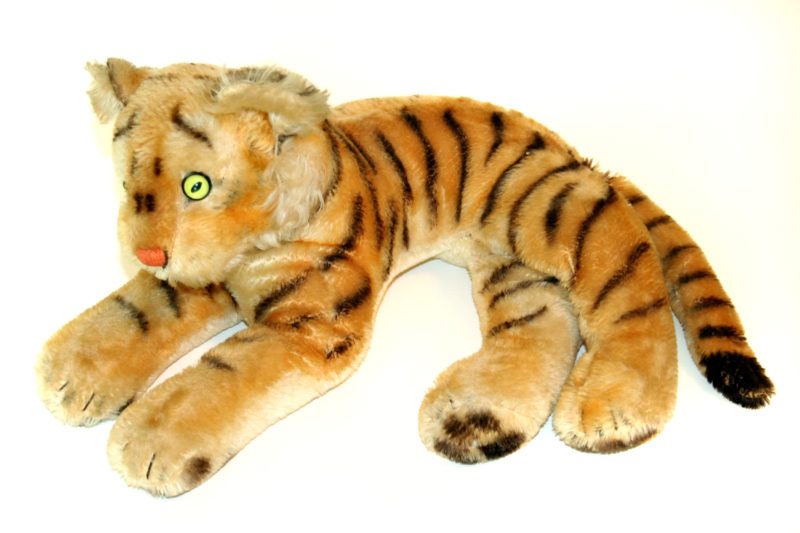
Stuffed Tiger. Collection of Martina Wells
Steiff Stuffed Tiger
Martina Wells and her husband both used to collect toys as children. When they got married, they combined their collections. They are now kept in their son’s room. These stuffed animals are known as “Steiff” stuffed animals, originally designed by German-born Margarete Steiff who started making stuffed animals as a hobby after polio confined her to a wheelchair. At first, there were only stuffed elephants, but Steiff animals grew in popularity with children, so more prototypes were made, including dogs, cats, and pigs.
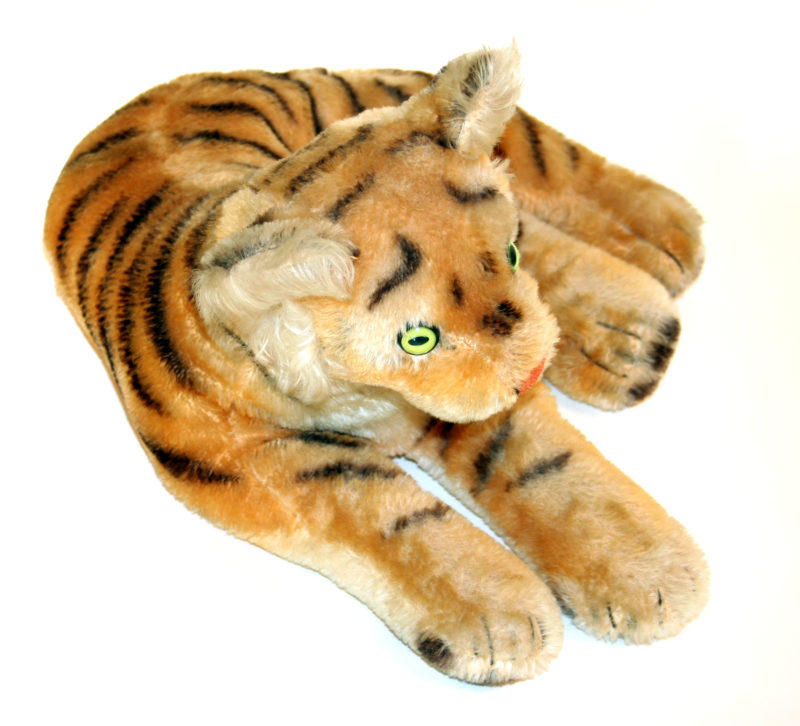
Stuffed Tiger: Side View. Stuffed Tiger. Collection of Martina Wells
Steiff Stuffed Tiger
The Steiff brand is credited with inventing the original toy bear with articulating joints that would become known as the Teddy bear. Steiff toys are authenticated by a gold button in the ear of each toy.
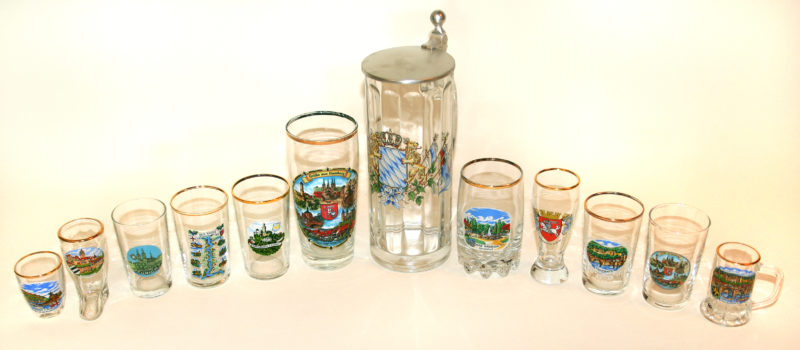
Collectible Glasses. Collection of Martina Wells
Collectible Glasses
“Every time we go visit places in Germany, we buy these little decorated wine and schnapps glasses for the children’s collection. Each glass has an image of a town/place/castle on it with the name. Since we travel a lot, we have accumulated quite a collection of these souvenirs. The kids get to use them on special occasions when the table is set particularly nicely. They remind us of our visits to Germany and the sites we saw.” —Martina Wells
Collections like this one are very popular in German and German American homes.
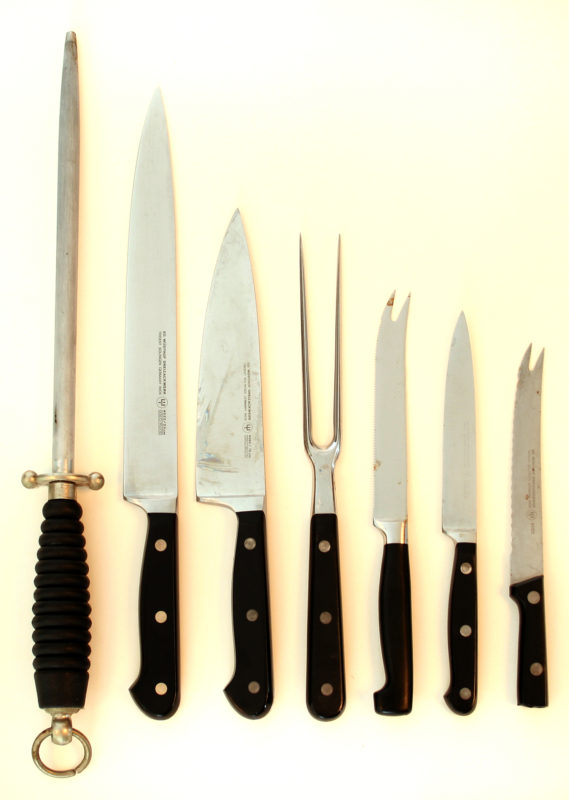
Kitchen Knives. Collection of Martina Wells
Kitchen Knives
In the early 1990s, good German knives were not readily available in the US, so Martina Wells sneaked these onto the plane on her way home from visiting Germany. She says, “These knives are a classic piece of German household ware. I got them as a gift when I first established my own household back when I lived in Germany and Switzerland. It was one of those ‘growing up’ gifts that signal a new phase in your life. Somehow, they are still an important link to Germany.”
Movies and Books
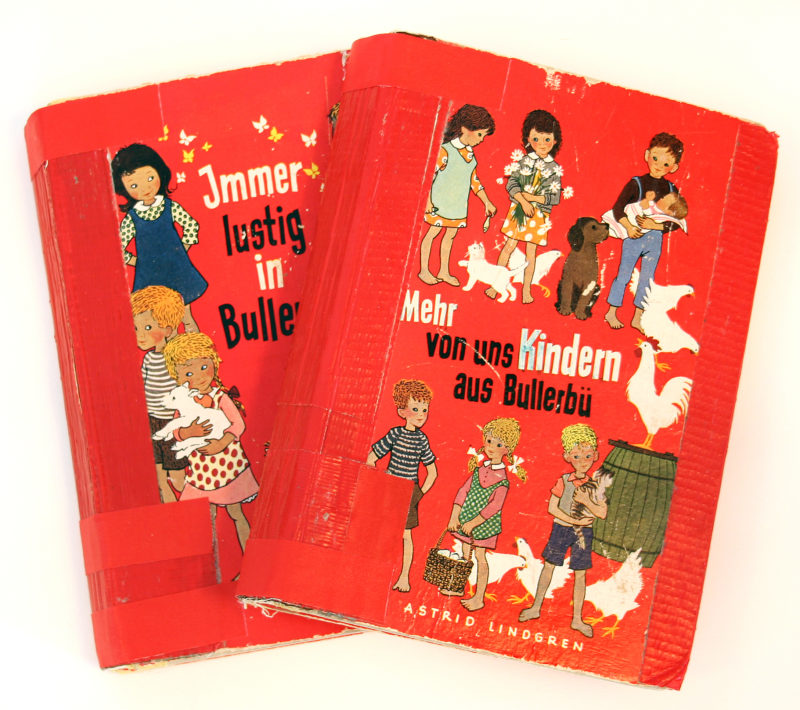
German Children's Books
German Children's Books
The writer of these books, Astrid Lindgren, is a Swedish-born children’s author best known for creating the character Pippi Longstocking. In English, the series pictured here is known as The Six Bullerby Children or The Children of Noisy Village. Lindgren also wrote many other popular children’s stories known throughout the world but especially beloved in Scandinavia, Germany, and Austria. Children’s stories, folk tales, and fairy tales hold a special place in German culture due to the fact that traditional German history has been told through oral fables. The best-known examples are those written down by the German brothers Jacob and Wilhelm Grimm; many other stories were passed down as folk songs. More recently, stories like “Emil und die Detektive” by Erich Kästner have carried on the tradition of German storytelling.
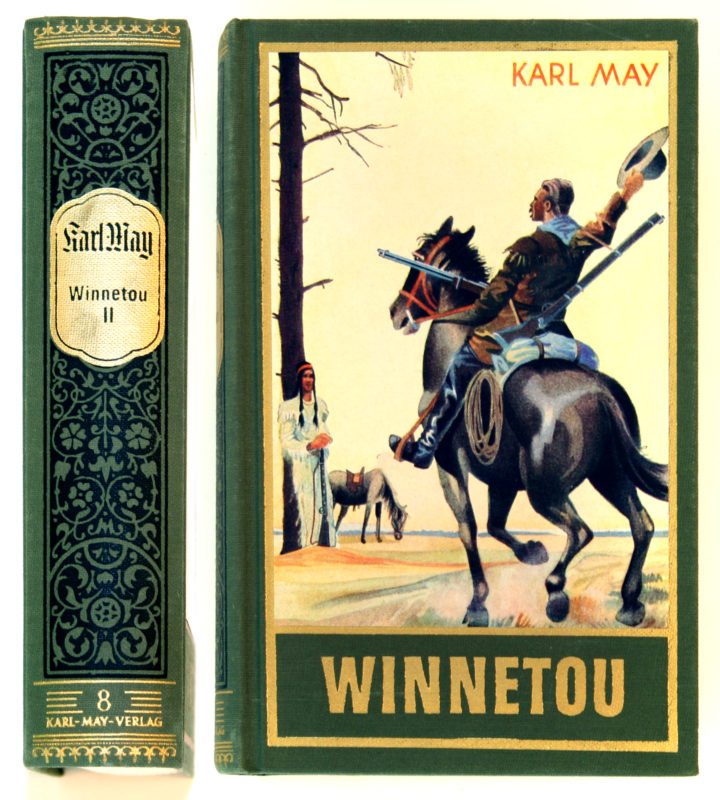
Winnetou Book. Collection of Petra Zaidi
Winnetou Book
The book shown here is volume II of the Winnetou Tetralogy. It was first published in 1893. The character of Winnetou was created in 1875 by German author Karl May, who went on to write over twenty Winnetou books and stories. The stories’ narrator, Old Shatterhand, is a German noble traveling in the American Southwest who befriends Winnetou, an Apache chief, and eventually becomes his blood brother. Winnetou is portrayed as the “Noble Savage” who rises above his “natural” state and adopts the romantic and Christian traits of May’s own vision of German civilization. Strangely enough, May never visited the American Southwest. However, for many Germans, his stories have provided their main contact with Native American culture. The stories were so popular that they were not even banned by the Nazis, despite their heroic treatment of people of color. As early as the 1950s, the stories’ popularity sparked events such as the Karl-May-Festspiele (Karl May Festival), where people act out the stories on horseback and camp out in Native American regalia. Karl-May-Festspiele continues to take place today in many locations throughout Germany and Austria, and the stories remain an important part of German culture. Our German American collaborator, Petra Zaidi chose these objects because of their importance during her childhood.
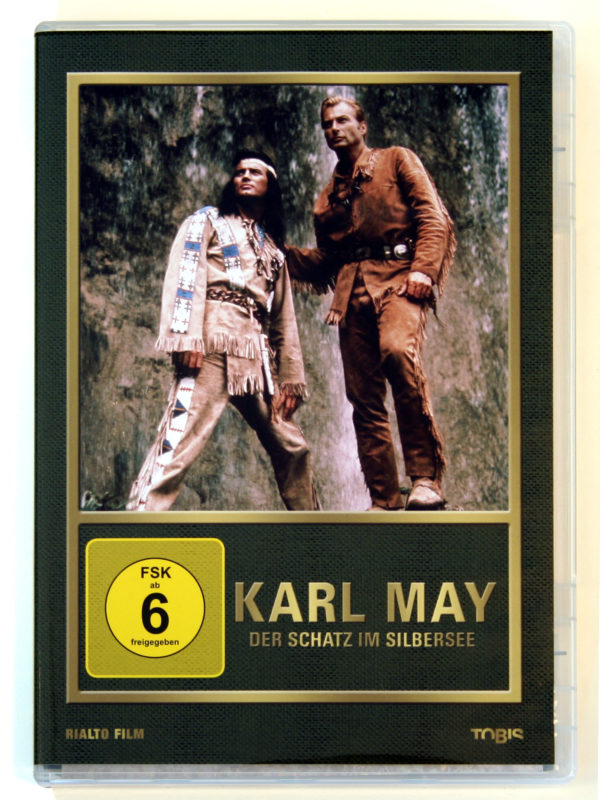
Winnetou Movie. Collection of Petra Zaidi
Winnetou Movie
This film, entitled “The Treasure in Silbersee,” is one of many featuring Winnetou. In the 1960s the stories were turned into movies featuring French actor Pierre Brice as Winnetou and Lex Barker as Old Shatterhand.
Sports and Games
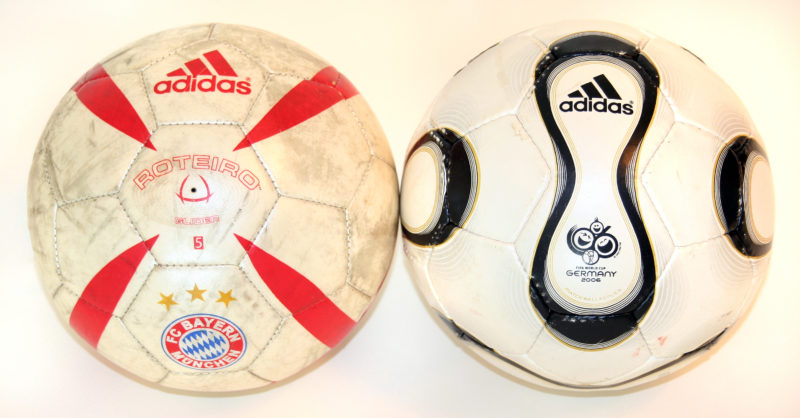
Soccer Balls. Collection of Martina Wells
Soccer Balls
German soccer, or Fuβball, has been a traditional activity and sport within the German culture for many years. However, it was only around the beginning of the twentieth century that the country officially organized soccer leagues and a national championship. “My children all play soccer here and adore the German teams. They root for Germany in international tournaments. We often buy jerseys when in Germany or they request them as gifts from their German relatives.” —Martina Wells
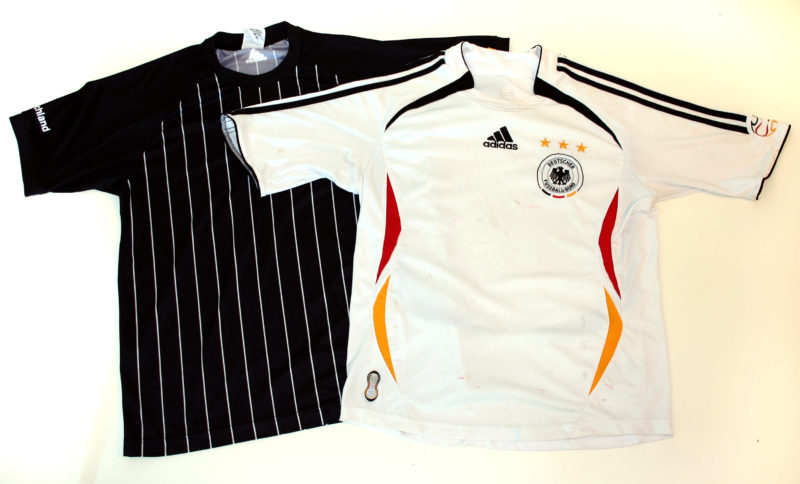
Soccer Jerseys. Collection of Martina Wells
Soccer Jerseys
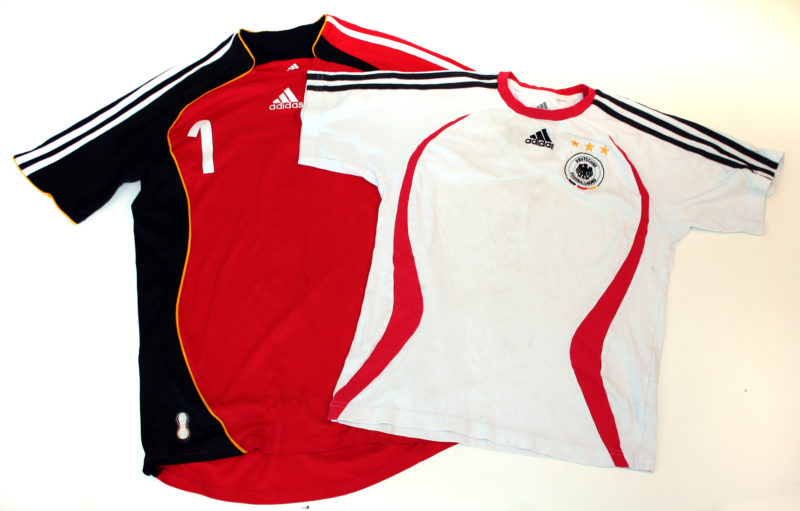
Soccer Jerseys. Collection of Martina Wells
Soccer Jerseys
Correspondence
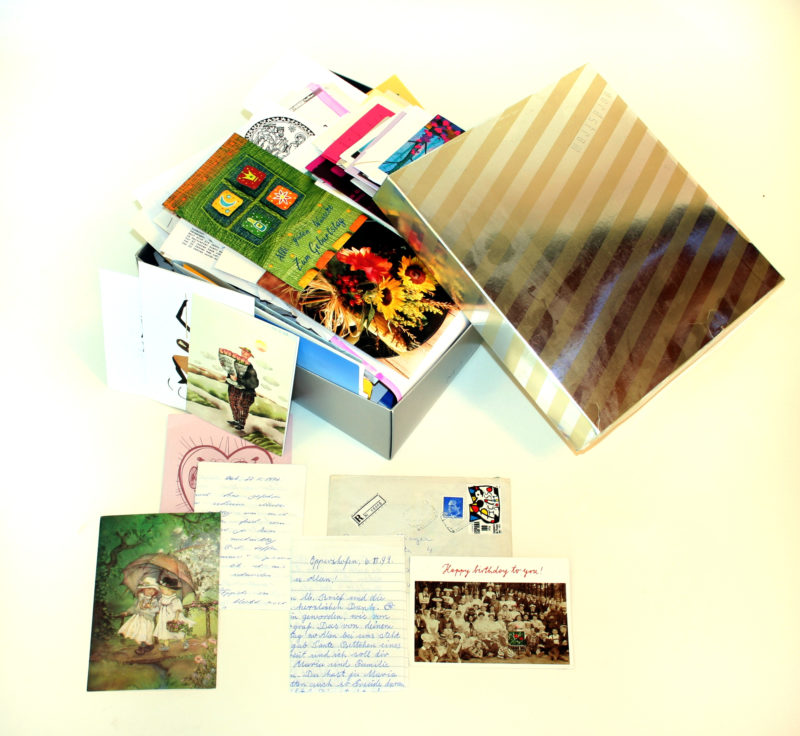
Box of Letters. Collection of Martina Wells
Box of Letters
“These boxes contain a collection of letters and postcards and notes written over a span of at least 10 years by friends and family from back home. They are over twenty years old. They live in a closet on a shelf. Although I don’t read them—it is too emotional—I must keep them.” —Martina Wells
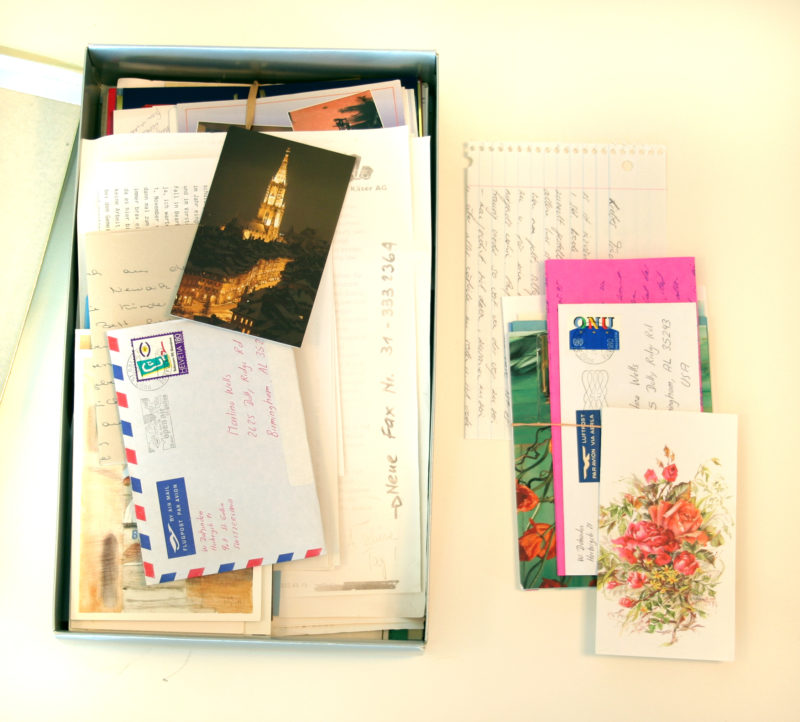
Box of Letters. Collection of Martina Wells
Box of Letters (overhead view)

